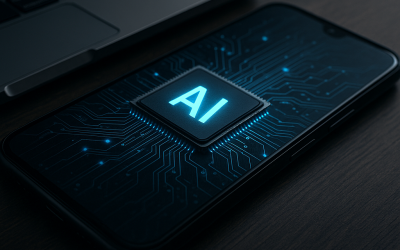AI Productivity Promises Collapse as Overreliance on Human Workarounds Exposes Systemic Gaps
AI was pitched as the ultimate productivity multiplier, but cracks are showing. As organizations scramble to plug gaps with human workarounds, it’s clear that the current approach to AI integration is creating more friction than it solves. This article examines the real reasons behind AI’s productivity shortfall and what leaders must do to address the root causes.
The Illusion of Seamless AI: Where the Productivity Story Breaks Down
It’s easy to get swept up in the narrative that AI will automate away inefficiency and free up humans for higher-value work. The reality, however, is far less tidy. Most AI deployments in the enterprise are not autonomous engines of value—they are brittle systems that require constant human intervention, patching, and oversight. This is not a technical footnote; it’s a systemic flaw.
Let’s break down the core issues:
- Human Workarounds Are the Norm, Not the Exception: Instead of end-to-end automation, organizations rely on employees to fill gaps—correcting errors, massaging data, and making judgment calls where AI falls short. These “shadow workflows” are invisible on paper but critical to operations.
- Integration Debt Is Growing: AI tools rarely fit cleanly into legacy systems. The result is a patchwork of manual integrations, API bridges, and duct-tape solutions that increase fragility and risk over time.
- Data Quality and Context Are Chronic Bottlenecks: AI models are only as good as the data they consume. Inconsistent, siloed, or low-quality data forces humans to step in and “fix” inputs and outputs—undermining any claims of hands-off productivity.
- Accountability Is Diffuse: When AI fails, responsibility is often unclear. Is it the vendor’s model, the IT team’s integration, or the end user’s prompt? This ambiguity drives more manual oversight and slows decision-making.
The net effect: Instead of reducing headcount or freeing up talent, AI often shifts work into less visible, more frustrating forms. Employees become babysitters for half-baked automation, and the promised productivity gains evaporate into hidden labor costs.
Root Causes: Why AI Isn’t Delivering Real Productivity
To understand why AI’s productivity narrative is collapsing, you have to look beyond the technology itself. The core problems are organizational and systemic:
- Misaligned Incentives and Hype Cycles: Vendors and executives are incentivized to overpromise and underdeliver. The pressure to “do something with AI” leads to rushed deployments, superficial pilots, and a focus on optics over outcomes.
- Lack of Process Reengineering: Most organizations bolt AI onto broken processes instead of redesigning workflows to leverage automation. This results in Frankenstein systems that are neither efficient nor robust.
- Short-Term Thinking and KPI Theater: Success is measured by vanity metrics—number of AI projects launched, hours “saved” on paper—rather than real, sustainable impact. This obscures the true cost of workarounds and technical debt.
- Failure to Invest in Change Management: AI changes how work gets done, but most organizations underinvest in training, process mapping, and cultural adaptation. The result is confusion, resistance, and more manual intervention.
- Overreliance on Black-Box Models: Deploying opaque AI systems without clear guardrails or interpretability creates a trust gap. When users can’t diagnose or correct errors, they compensate with extra checks and manual reviews.
These issues aren’t solved by throwing more AI at the problem. In fact, layering new tools on top of old dysfunction only deepens the gap between promise and reality. The organizations seeing real productivity gains are those willing to do the hard work of systems thinking: reimagining processes, aligning incentives, and investing in robust data and change management practices.
Strategic Actions: What Grounded Leaders Must Do Now
For technical leaders and operators, the lesson is clear: AI is not a silver bullet, and wishful thinking won’t close the productivity gap. Here’s what needs to happen next:
- Audit the Real Workflows: Map out where human workarounds are propping up AI systems. Quantify the hidden labor and risk. Don’t accept vendor dashboards at face value—go to the front lines and observe the real process.
- Redesign, Don’t Retrofit: Use AI as a catalyst to rethink end-to-end workflows, not just automate individual steps. Eliminate unnecessary complexity and focus on where automation truly adds value.
- Invest in Data Foundations: Prioritize data quality, governance, and interoperability. AI is only as strong as the data pipeline beneath it. Treat data stewardship as a first-class operational concern, not an afterthought.
- Clarify Accountability and Ownership: Define who is responsible for AI outcomes at every stage—from model training to integration to user adoption. Build clear escalation paths for when things go wrong.
- Measure What Matters: Shift from vanity metrics to real productivity indicators—cycle time, error rates, customer satisfaction, and bottom-line impact. Make hidden work visible and track progress over time.
- Champion Change Management: Treat the human side of AI as a core project deliverable. Invest in training, communication, and process adaptation to ensure adoption and trust.
Ultimately, leaders who confront the uncomfortable truths about AI’s limitations—and take a systems-level approach to integration—will be the ones who capture real, sustainable productivity gains. Everyone else will be stuck in an endless loop of patching, firefighting, and disappointment.
Conclusion
AI’s productivity hype is unraveling as the hidden costs of human workarounds and systemic dysfunction come to light. The path forward isn’t more blind automation, but a ruthless focus on process redesign, data quality, and accountable leadership. Only by addressing these foundational gaps can organizations turn AI from a liability into a true productivity asset.



0 Comments